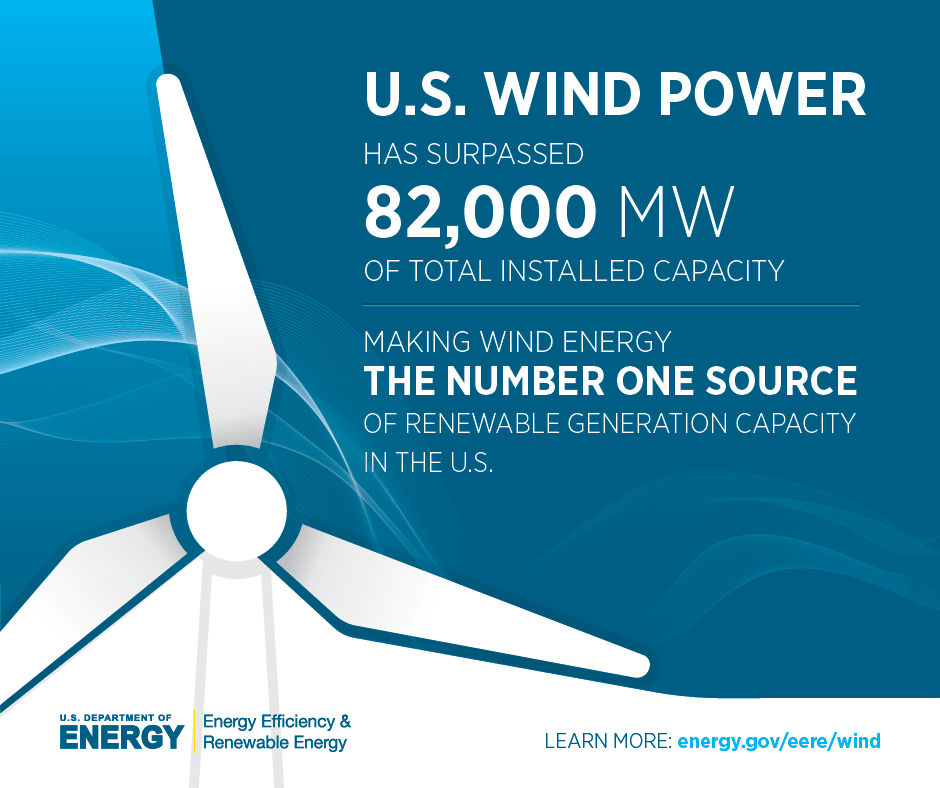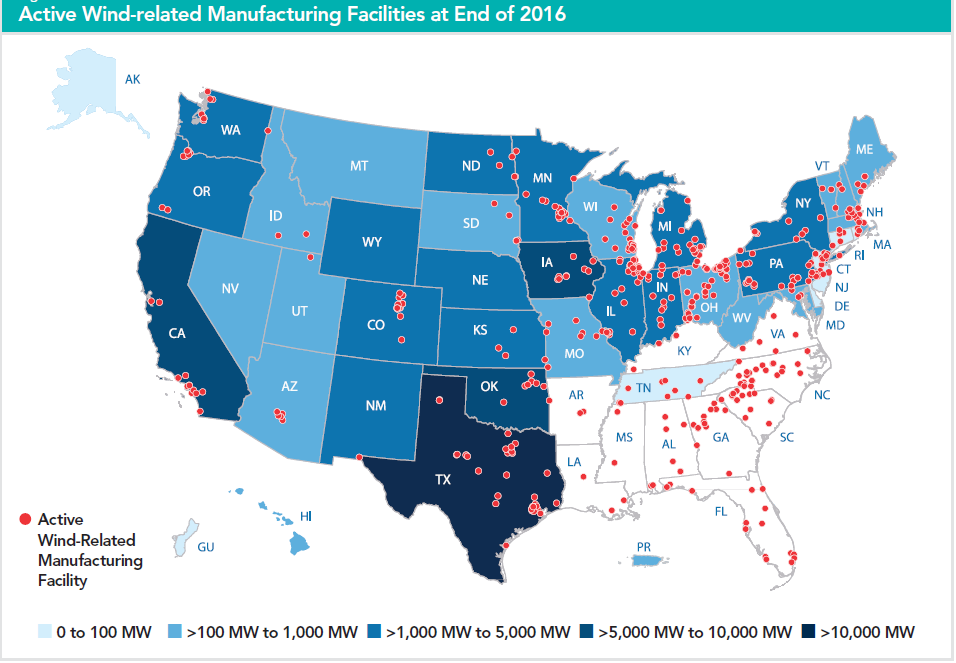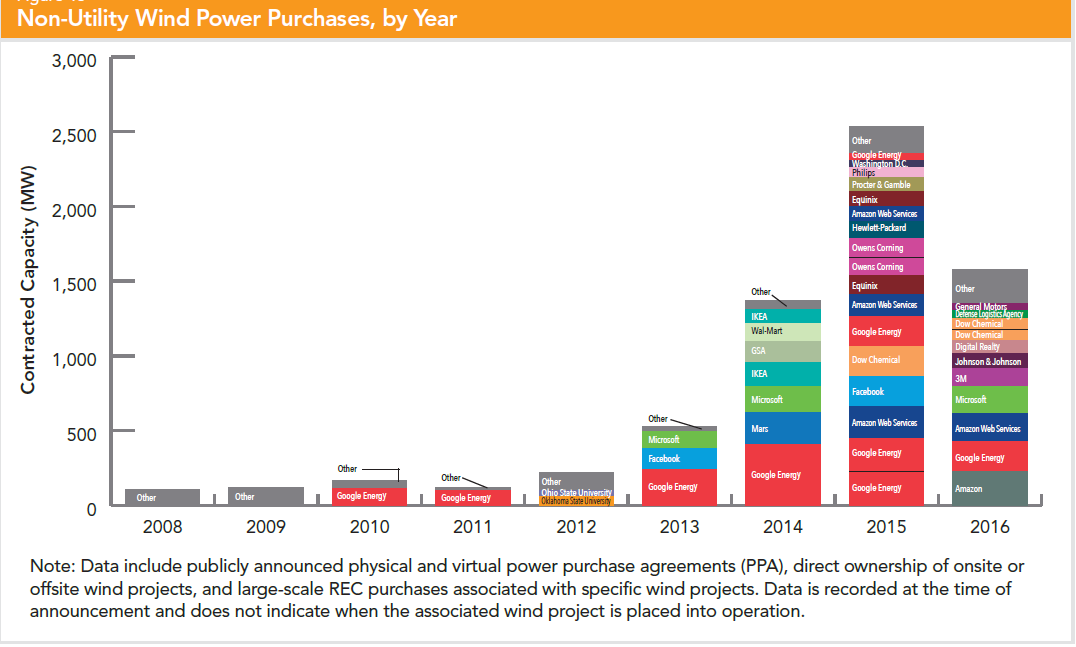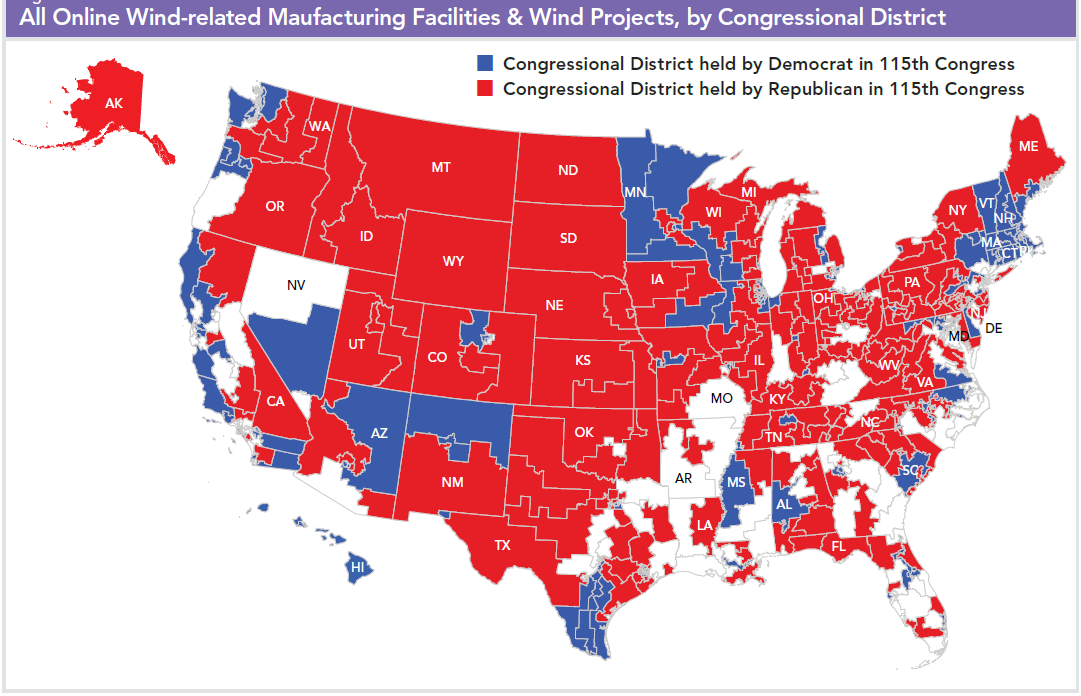
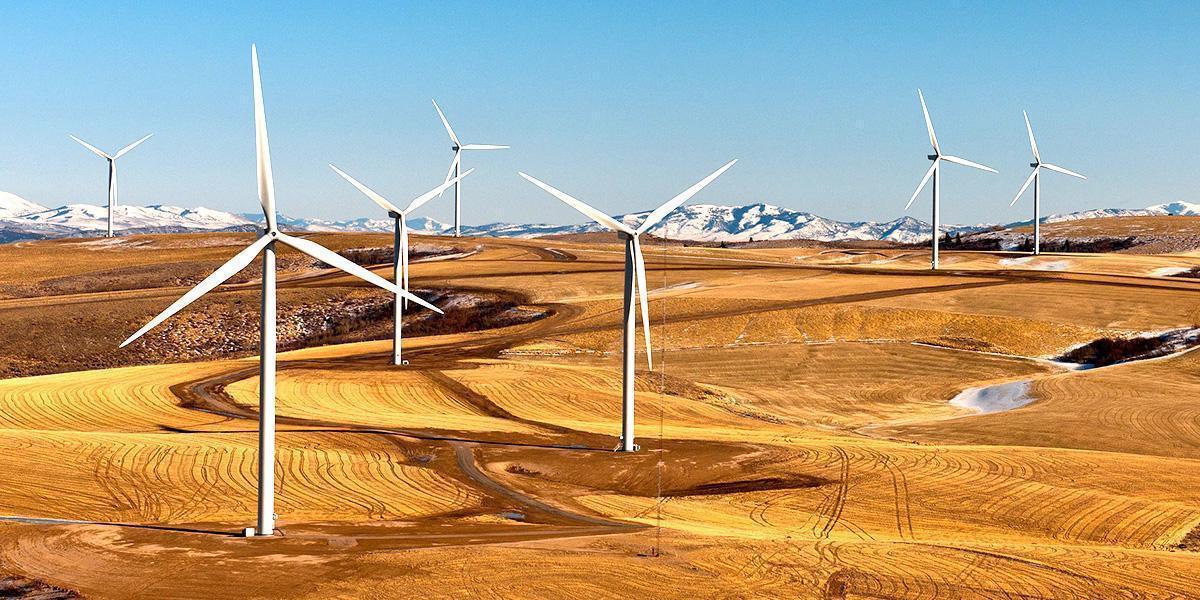
By John Hensley
AWEA released its U.S. Wind Industry Annual Market Report, Year Ending 2016 today, which showcases strong, steady growth throughout the year.
Wind power became the largest source of renewable generating capacity and supplied record amounts of wind energy to many parts of the country. Strong wind project construction, a growing manufacturing sector and the increasing need for wind turbine technicians and operators allowed the industry to add jobs at a rate nine times faster than the overall job market, as wind employment grew to a record 102,500.
Technology advances resulted in more productive turbines, with recent generations achieving average capacity factors more than 40 percent, all while costs continued to fall. And the industry saw the installation of the country’s first offshore wind project off the coast of Rhode Island.
Here are the top 11 wind industry trends in 2016:
1. Record Wind Jobs
For the first time in history, there are more than 100,000 Americans employed in the U.S. wind energy industry. Strong wind construction activity throughout the year, combined with a strengthening wind manufacturing sector and growing need for personnel to operate and maintain more than 52,000 wind turbines, allowed the industry to add nearly 15,000 full-time equivalent jobs in 2016.
That brings total U.S. wind industry jobs to 102,500. Impressively, the U.S. wind industry added jobs more than nine times faster than the overall economy. Strong wind project installation, construction, and development activity, combined with strong wind-related manufacturing activity, and over 52,000 wind turbines to operate and maintain, led wind jobs to grow 16.5 percent. That’s compared to 1.8 percent for the overall U.S. job market.
2. Wind #1 Source of Renewable Generating Capacity
Wind energy passed hydroelectric power to become the number one source of renewable generating capacity in 2016. With federal policy stability secured, the U.S. wind industry installed 8,203 megawatts (MW) in 2016 and the industry now has 82,143 MW installed overall, enough wind power for the equivalent of 24 million American homes.
3. Generation Records Set
Wind energy delivered more than 30 percent of the electricity produced in Iowa and South Dakota in 2016. Kansas, Oklahoma and North Dakota generated more than 20 percent of their electricity from wind, while 20 states now produce more than five percent of their electricity from wind energy. ERCOT, the main grid operator for most of Texas, and SPP, which operates across parts of 14 states, competed for new wind power penetration records throughout 2016, both topping 50 percent wind energy on several occasions.
4. U.S. Manufacturing Sector Growth
Wind energy continues to fuel the domestic manufacturing sector, with more than 500 factories across 41 states producing components for the U.S. wind industry in 2016. Domestic wind-related manufacturing jobs grew 17 percent to more than 25,000 as three new factories began supplying the wind industry and five plants expanded production.
5. Technology Boosts Productivity
Technological advances allow wind turbines to reach stronger, steadier winds, and more sophisticated control systems are increasing the amount of electricity modern wind turbines generate. Wind turbines built in 2014 and 2015 achieved capacity factors more than 40 percent during 2016. At the same time, the cost of wind energy dropped more than 66 percent between 2009 and 2016.
6. Corporations and Utilities Want Wind
Fortune 500 companies, electric utilities and others signed 47 power purchase agreements totaling more than 4,000 MW during 2016. In doing so, they cited the declining costs and stable price of wind power as factors. Utilities submitted Integrated Resource Plans detailing at least 14,000 MW in wind power additions in the past two years.
7. Record Wind Enters Queue
67 gigawatts of newly proposed wind projects were added to interconnection queues in 2016, the largest since the addition of 67.3 GW in 2009. This brings total wind capacity in the queues to 136.8 GW, the highest level in five years.
8. Improving the Transmission Grid
Transmission expansion to serve wind continues, particularly in MISO and SPP. A number of proposed interregional Direct Current transmission lines have now also cleared final permitting hurdles. In total, transmission projects that could support the delivery of nearly 52,000 MW of wind energy over the next five years are currently under development, though not all are likely to be built.
9. Wind Benefits Every State
More than 74 percent of U.S. congressional districts have operational wind energy projects or active wind-related manufacturing facilities, including 77 percent of Republican districts and 69 percent of Democratic districts. The industry invested more than $14.1 billion in new wind projects and supported 102,500 jobs across all 50 states.

 233k
233k  41k
41k  Subscribe
Subscribe 
